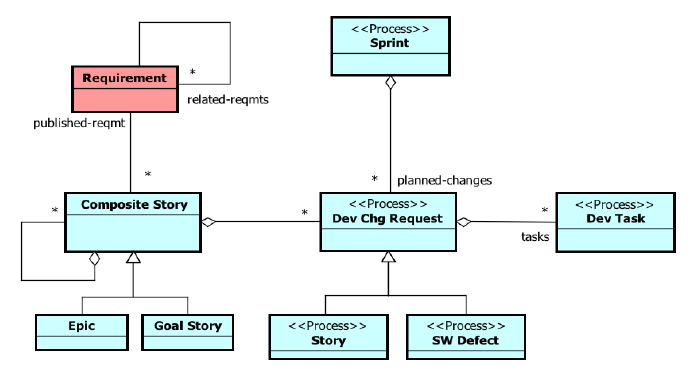
The Serena Orchestrated IT Reference Architecture supports many types of software development lifecycle, including traditional waterfall development models as well as Agile development methodologies such as Scrum.
The following domain model describes the objects and relationships when managing Agile development projects. This expands the Sprint node in the Development Management Domain Model.

Objects in the Agile Planning domain model include the following.
A sprint is an interval of work, with a collection of change requests to be completed associated with it. In Agile development, this collection might be called a backlog. A sprint is a way to organize work into small increments that development teams can work on, one at a time.
A composite story is a collection of multiple user stories that describe a new feature, enhancement, or defect fix from a user perspective. A composite story may broken down into epics or goals stories, and may be related to product requirements.
An epic is a type of user story that is too large in scope to fit into one user story. It may be broken down into several user stories.
A goal story is a story that describes a high level feature or product goal.
A story is a description of a user’s experience with the enhancement or fix that the change request is asking for.
A software defect is an issue that describes a functional problem with software.
A development task is a type of change request that is designed to be assigned to specific developers and worked on. You can associate tasks to specific code objects, ensuring traceability between change requests and work. Any number of tasks can be assigned to parent change requests.